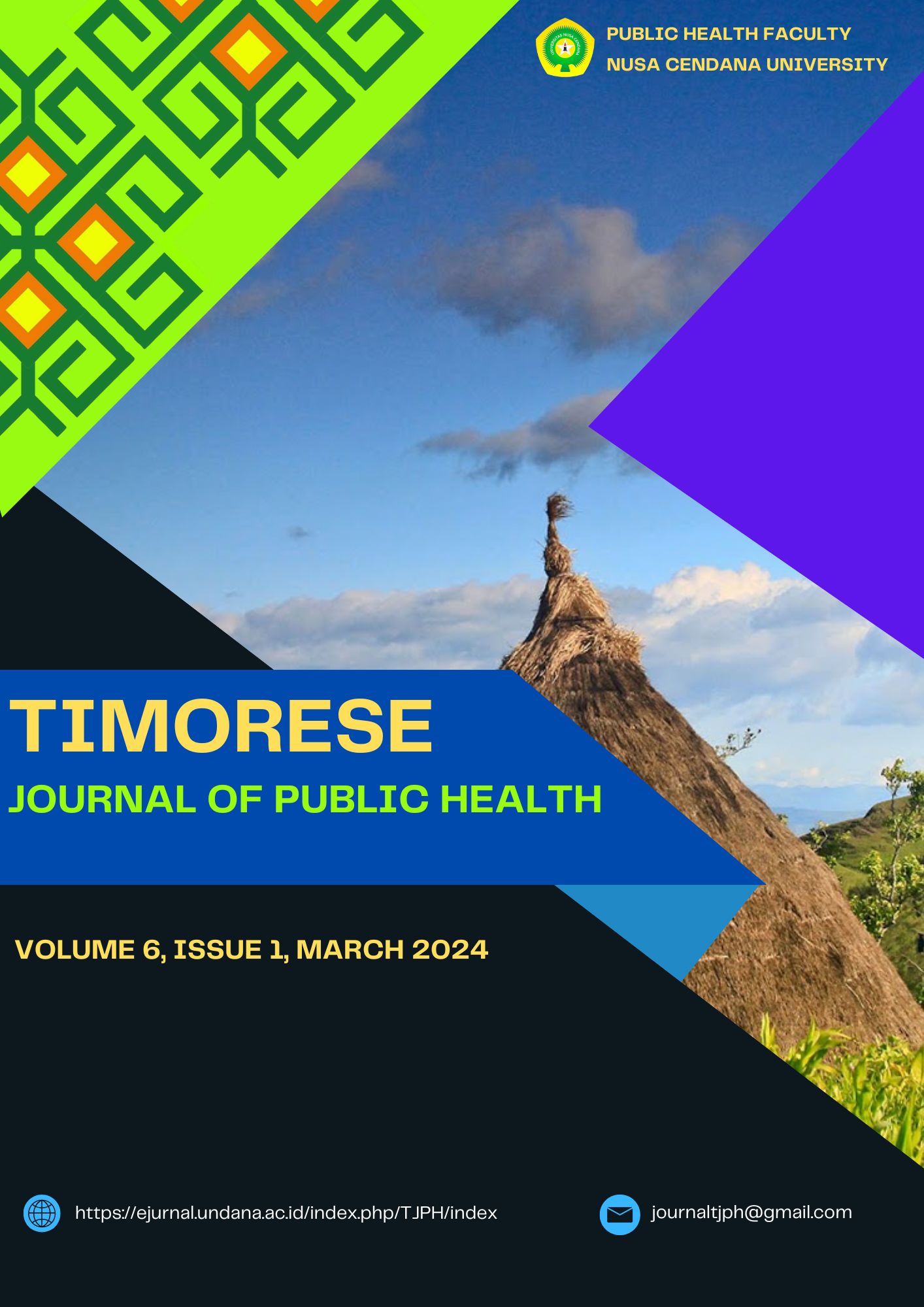Testing the Effectiveness of Temephos on the Mortality of Aedes sp. Mosquito Larvae in Oesapa Sub-District, Kelapa Lima, Kupang City
Main Article Content
Abstract
Dengue Hemorrhagic Fever is a disease with the potential for outbreaks/outbreaks caused by the Dengue virus and transmitted by the Aedes sp mosquito vector. The Ministry of Health of the Republic of Indonesia noted that in 2017 there were 68,407 dengue cases with 493 deaths. In 2018 it decreased to 53,075 cases with 344 deaths or 0.64% CFR. In January 2019, dengue cases increased sharply when compared to the previous year, from 6,167 cases with 43 deaths or 0.69% CFR to 13,683 cases with 132 deaths or 0.96% CFR. DHF cases in NTT in the last three years have decreased, namely in 2016 there were 665 cases, in 2017 there were 542 or 10.3/100,000 and in 2018 there was a decline again by 210 cases with one death or CFR 0.48 per 100,000 population. The purpose of this study was to determine differences in the effectiveness of the use of temephos on the mortality of Aedes sp mosquito larvae in Oesapa Village, Kelapa Lima District, Kupang City. This research was an experimental study with a completely randomized design with 3 treatments, namely temephos which was sown, wrapped in gauze and wrapped in plastic and the control was not given any treatment. The number of samples was 250 larvae . Analysis of the data used was the Kruskal Wallis Test. The results of the analysis of the -Value value of 0.257 > 0.05, which means that there is no significant difference in the mortality of Aedes sp larvae in each treatment group. The highest average mortality of Aedes sp larvae was in the treatment of sown temephos, which was 12,50 while the wrapped in plastic group had the lowest average of 8,50. Researchers hope that the community can participate in dengue vector control by implementing the use of temephos in their respective households.
Downloads
Article Details
References
2. Anggraeni. S. 2017. Efektivitas Metode Abatisasi dengan Menggunakan Sistem Mebran dan Sistem Tabur. Makasar: Unhas. Diunduh dari http://digilib.unhas.ac.id/uploaded_files/temporary/DigitalCollection/ZmM4Tc5Yzk0MDU4ODk5ZDdhNDk5YTBizBDU1NWQ4MWlyNg==.pdf Pada tanggal 25 September 2019.
3. Astuti. I. 2010. Sebaran Vektor Penyakit Demam Berdarah Aedes aegypti. Artikel Penelitian. Vol 4.(2): 8287. Di unduh dari https://ejournal.unisba.ac.id/index.php/gmhc/article/view/1602 pada tanggal 15 Desember 2019.
4. Samarang, S., Srikandi, Y., Rahma, S., & Sutrisno, S. (2017). Tingkat Kematian Larva Aedes aegypti dan Aedes albopictus Terhadap Penggunaan Abate Dengan Metode Berbeda.
5. Dinkes Provinsi NTT. 2018. Profil Kesehatan NTT Tahun 2017. Kupang: Dinas Kesehatan Provinsi NTT. Diunduh dari http://www.depkes.go.id/resources/download/ptofil/PROFIL_KES_PROVINSI_2015/19_NTT_2015.pdf Pada tanggal 18 Oktober 2019.
6. Enviromental Protective Agency. 2015. Temephos. Retrieved from http://www.epa.go./oppsrrd1/REDresources/temephos_Red.htm
7. Kurniawan, B., & Muhammad Yusran, Y. (2019). Efektivitas Dari Tanaman Zodia (Evodia Suaveolens) Sebagai Insektisida Nabati Nyamuk Aedes aegypti Penyebab Demam Berdarah. MEDULA, medicalprofession journal of lampung university, 9(2), 351-358.
8. Majida, A. N., & Pawenang, E. T. (2019). Risiko Kepadatan Jentik Aedes aegyti di Sekolah Dasar. HIGEIA (Journal of Public Health Research and Development), 3(3), 382-393.
9. Raharjanti, N. D., & Pawenang, E. T. (2018). Keberadaan jentik aedes aegypti di kelurahan karangjati. HIGEIA (Journal of Public Health Research and Development), 2(4), 599-611.

